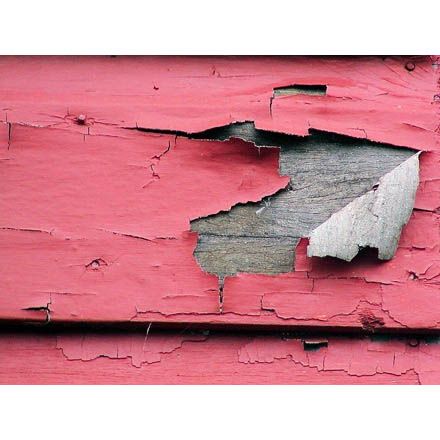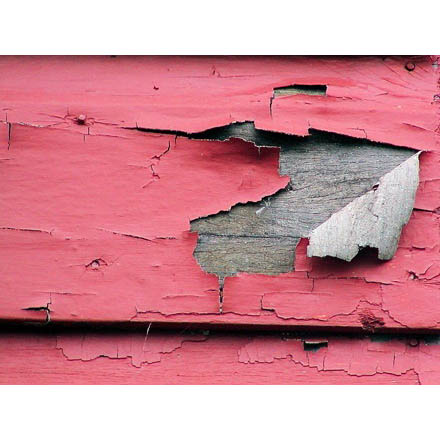
College Works Painting, located in Oregon, has been fined by the EPA for not complying with lead paint regulations. Their blunder? The firm failed to distribute the EPA Renovate Right Lead Hazard Information Pamphlets to homeowners on several jobs in 2008. The firm also failed to produce records showing that they were in compliance with lead-paint regulations during those jobs, which allegedly took place in Portland, McMinnville, and Hillsboro.
This little misstep has cost the firm $32,508, which they’ve agreed to pay. This is the first I’ve heard of a contractor getting nailed with such a steep fine, but it’s a stark reminder of how serious lead paint regulations are.
Here, you’ll have access to articles, podcasts and videos that teach you everything you need to know about working safely and fine-free.
Related Article:
Lead Law Claims First Contractor
Fine Homebuilding Recommended Products
Fine Homebuilding receives a commission for items purchased through links on this site, including Amazon Associates and other affiliate advertising programs.

Handy Heat Gun

Affordable IR Camera

Reliable Crimp Connectors





























View Comments
I suppose it was only a matter of time until "they" found someone to make an example of. There's probably a lot more to the story, but this type of crackdown is likely to have serious implications.
I think I have to agree with you. Even though the incident took place way back in 2008 before the “new” lead paint laws were put into effect last April, the EPA released the news brief this past Wednesday (4/6). It does seem like they’re trying to make a statement.
How can they fine someone for anything done before the laws were in place?
Because the EPA-RRP rules where on the books for a few years prior to the 4/22/10 deadline. Before the deadline you where only required to give the "Renovate Right Pamphlet and get a receipt. But, after the deadline you are now required to work under the the EPA guidelines. Correct me if I am wrong.
I have spoken with a few local painting contractors that I have working relations with here in the Chicago area and they look to be avoiding/minimizing contact with pre78 housing stock or they are limiting the type and methodology of work involved with older housing stock. I suspect very little to no scraping/sanding is the compromise.
It appears that most of their current customer base is willing to live with this arrangement in order to work around the new reg.s and short term cash savings. They are maintaining a good work load as far as I can see. Far better than I'm doing.
Maybe it's just me but these RRP rules are deal breakers for my customer base when I give a bid and the testing/prepwork/disposing of waste can add and extra $1000.00 or more to the bid of even a small renovation. After I follow up, I regularly find that they have gotten the job done thru some fly by night outfit.
You know what an unsigned contract and a wallet are worth----their worth the empty wallet.
You can get fined for not handing out a federal pamphlet? I've renovated two houses that old without giving my wife a pamphlet. Am I in trouble?
Actually, the pre-renovation education regulation went into effect in 1999. Pre all the RRP regulations, the requirement was to pass out the 'Protect Your Family from Lead-Based Paint' if you were working in pre-1978 housing for compensation. The handout changed to 'Renovate Right' approximately 2 years ago and then you know the rest...
Amazingrace, I think you've got it right. No one has been fined for violating the latest lead paint laws (at least to my knowledge) However, the EPA is now releasing news briefs highlighting the hefty fines placed on contrators for violations that occured under the previous legislation. Yesterday I recieved another notice via an EPA twitter feed--this time for a window and siding outfit here in CT. Here is a link:
http://yosemite.epa.gov/opa/admpress.nsf/d0cf6618525a9efb85257359003fb69d/dfa3c2b788c125748525785c0065338b!OpenDocument
i'll come over and paint you house epa man
1 billion
Another thing to be careful of is if you take the class you are personally certified. You also have to fill out the paperwork to certify your company. An extra $300 on top of the original cert cost of $300. Then a few investments like HEPA vacuums and a lot of plastic to protect your work area, suits, respirators the list goes on. It is like working on a superfund. There are benefits, but for people who play by the rules it is making it tough to compete with... well you know.
First, I am happy to see another article address the lead issue. About a year ago there were several articles written on this subject @FHB. But since then, none, until now. Secondly, since my firm is certified , one lead carpenter and myself are certified, I find with a year of the guidelines in place, work overall, for many reasons have declined to a point that there is very little work. I completed four projects with the guidelines. I was very nervous, to the point that I was focusing more on guidelines then the actual job itself. I was looking more at taped seams and plastic covers then mitre corners and plumb doors. Ok, maybe I am exaggerating, you got idea. One question I have, am I supposed to make copies of all the paper work and give it to the client when I am finished with the project.? I can not get a straight answer from the people I ask.
First RRP Violation! “Two workers employed by Colin Wentworth of Rockland, ME failed to contain dust and debris generated by lead paint removal activities during a repainting project in October 2010” The owner got certified, but his firm was not, and no one with RRP certification was on the job supervising his employees did not. There were six kids living in the house, one under 6 years old. Here’s a free webinar from Benjamin Moore. You may want to sign up for this one. https://www2.gotomeeting.com/register/908869787
And they 'agreed' to pay the fine? I am so glad that I don't renovate and work anymore. What a bunch of hooey! I will accept the fact that lead based coatings do pose a hazard. However, I object to the heavy handed EPA rules and regulations regarding what a contractor must do to comply.
Insurance rates will most surely rise for anyone doing renovation work. Good luck out there and be safe.
It seems that what the new law does is shift the burden of proof to the contractor to prove that they are working safely, if that question comes up, instead of te situation that existed in the past where the government or a person impacted by the work would have to prove that they were not.
Given the cost of evaluating the situation capably, I think the new approach makes much more sense, if the goal is actually to prevent people's health and property being damaged by lead exposure. In that context, $35,000 doesn't seem like a lot of money at all.
Don't forget that lead damages people of all ages health.
The cost in medical bills alone, over a lifetime, of just one person's losing their health could easily be at least an order of magnitude higher.
When you add in the cost of losing one's job because of illness, and then perhaps the cost of defaulting on a home loan, etc, isn't it better to have the expense of clean remodeling - which is predictable, than the often huge costs of lead-driven illness, which often is never identified, which are shifted to who- employees, children, families who live nearby..
Contractors should be able to see that as its been shown that lead causes all cause mortality to rise substantially,(see http://www.ncbi.nlm.nih.gov/pmc/articles/PMC3155319/pdf/ijerph-08-02593.pdf )
-in the final analysis, THEY themselves will be among those who benefit the most.
Get my point?
It seems that what the new law does is shift the burden of proof to the contractor to prove that they are working safely, if that question comes up, instead of te situation that existed in the past where the government or a person impacted by the work would have to prove that they were not.
Given the cost of evaluating the situation capably, I think the new approach makes much more sense, if the goal is actually to prevent people's health and property being damaged by lead exposure. In that context, $35,000 doesn't seem like a lot of money at all.
Don't forget that lead damages people of all ages health.
The cost in medical bills alone, over a lifetime, of just one person's losing their health could easily be at least an order of magnitude higher.
When you add in the cost of losing one's job because of illness, and then perhaps the cost of defaulting on a home loan, etc, isn't it better to have the expense of clean remodeling - which is predictable, than the often huge costs of lead-driven illness, which often is never identified, which are shifted to who- employees, children, families who live nearby..
Contractors should be able to see that as its been shown that lead causes all cause mortality to rise substantially,(see http://www.ncbi.nlm.nih.gov/pmc/articles/PMC3155319/pdf/ijerph-08-02593.pdf )
-in the final analysis, THEY themselves will be among those who benefit the most.
Get my point?